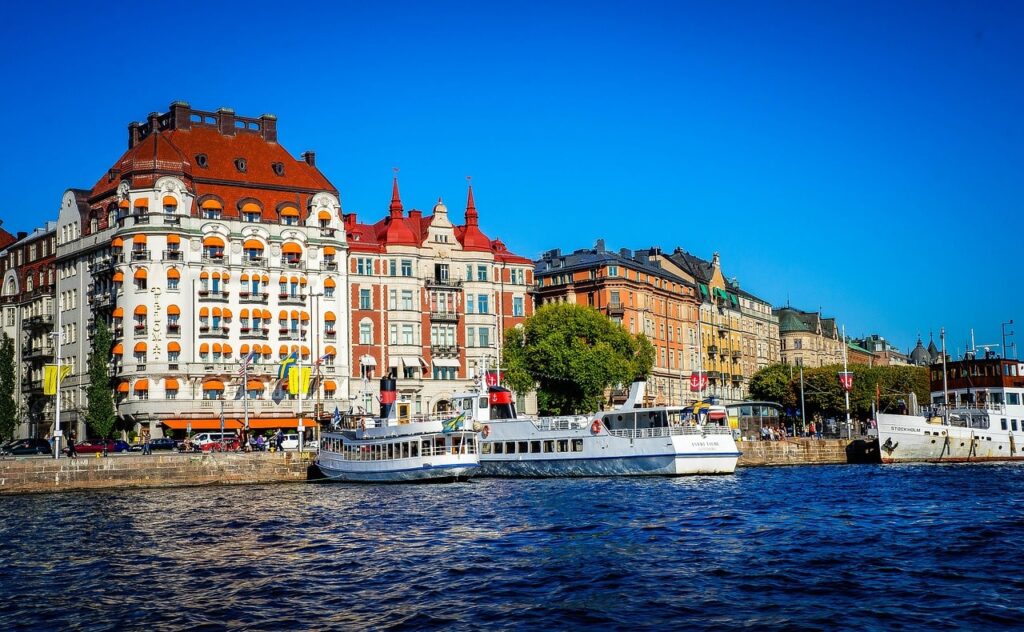Have you ever imagined buying a plot of land in Europe for the price of a cup of coffee? It sounds surreal, but that’s exactly what’s happening in the Swedish city of Götene.
Located about 320 km southwest of Stockholm, the city is offering 29 plots at astonishingly low prices, starting at just 1 Swedish krona per square meter, equivalent to approximately $0.052.
What makes this offer even more appealing is the potential of these plots. They are available for building the house of your dreams, whether as a permanent residence or a vacation home. Given the growing dissatisfaction with extreme heat in southern Europe, this could be a charming and economical alternative.

Götene is a picturesque rural region, with around 5,000 residents in the main town and approximately 13,000 in the surrounding municipal area. The city is located on the shores of Lake Vänern, the largest lake in Sweden and the entire European Union. With an area about 10 times larger than Lake Constance in Central Europe, Lake Vänern offers breathtaking natural scenery. Only Russia has larger lakes on continental Europe.
The land offer in Götene is not just an opportunity to acquire property at a low cost but also a chance to experience the beauty and tranquility of rural Swedish life. If you’re looking for a change of scenery or a peaceful retreat, Götene could be the perfect answer.
Götene, despite its natural beauty and attractions like Mount Kinnekulle and UNESCO-recognized sites such as the Platåbergens Geopark and the Lake Vänern Archipelago, faces significant challenges. Mayor Johan Månsson explains that the decision to sell plots at symbolic prices stems from a combination of factors, including the current economic recession and population decline in rural areas.
“The real estate market is extremely slow in our region and across Sweden due to high interest rates and a slight recession. So, we decided to inject something new into the market,” Månsson stated. Additionally, he highlighted demographic challenges such as low birth rates and an aging population, prompting the need to attract more residents to revitalize the community.
This initiative not only offers an affordable opportunity for potential buyers but also aims to economically and socially revitalize a region rich in natural and cultural resources.
“We decided to sell plots that have been on the market for many years for one Swedish krona per square meter, about $0.052. We thought: why not? It’s an extraordinary situation that requires extraordinary measures,” Månsson said. The proposal, launched last month, quickly garnered interest, with about 30 buyers expressing initial interest. So far, four plots have been sold at the symbolic price.
The unexpected success of the initiative has gone viral. Månsson reported that the offer triggered an avalanche of requests, with thousands of calls received at the municipality’s call center. “We have two people in our call center working intensely over the past few days. We’re essentially in crisis mode,” he said.
Due to the unprecedented volume of interest, authorities decided to pause the bidding process until early August to reassess their approach. When the process resumes, a bidding system is likely to be implemented for the plots, rather than keeping them at the 1-krona-per-square-meter price, applicable only if there are no competing buyers.
This measure was an effort to revitalize the local economy and attract new residents to an area facing challenges such as low birth rates and an aging population. It exemplifies how innovative measures can generate global attention and rejuvenate rural communities.
The plots, ranging from 700 to 1,200 square meters, were offered at extremely low prices, but building a house in Sweden is a significantly more expensive endeavor. Månsson mentioned that the average cost of building a house is around 3 to 4 million Swedish kronor.
So far, anyone, regardless of their residence in Sweden, can purchase a plot. There is no requirement to commit to living permanently in the city. However, Månsson warned that the rules might be revised in the future, especially since building a house does not automatically grant the right to reside there full-time, as visa regulations are determined by the Swedish government.
The city’s only requirement is that construction begins within two years of purchasing the plot.
The Götene initiative is not limited to these 30 plots. Månsson mentioned the possibility of implementing a similar affordable housing scheme akin to the “one-euro houses” concept promoted by rural communities in Italy. “We have many more plots and need to evaluate if we can do something beyond just these 30 plots. We need to have something to offer interested buyers,” he said.
This effort reflects a desire to revitalize the region and provide affordable opportunities for new residents while addressing economic slowdown and demographic changes.
“Initially, this was essentially a publicity stunt — we thought we’d be lucky to sell one or two plots,” said Månsson. The response exceeded all expectations. “With the interest we’re seeing now, it would be fantastic if we could sell all 30 plots. We’ve had a very stable population of 13,000 for several decades. If this works out, it could bring significant change to our town.”
The city offers more than just cheap plots. With the combination of a peaceful rural lifestyle and a high-quality natural environment, Götene can provide an excellent quality of life. “If you’re looking for a calm and peaceful life in the countryside, we can offer the perfect combination,” Månsson concluded.
Beyond the 30 plots currently available, there are plans to explore more opportunities in the future, perhaps even adopting a scheme similar to Italy’s “one-euro houses.” This demonstrates a commitment to revitalizing the community and attracting new residents, capitalizing on growing global interest.

